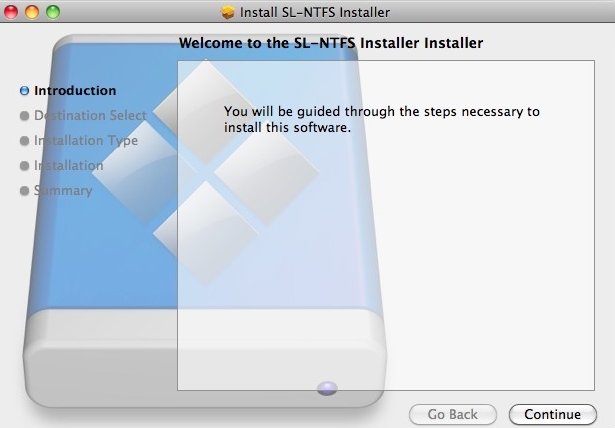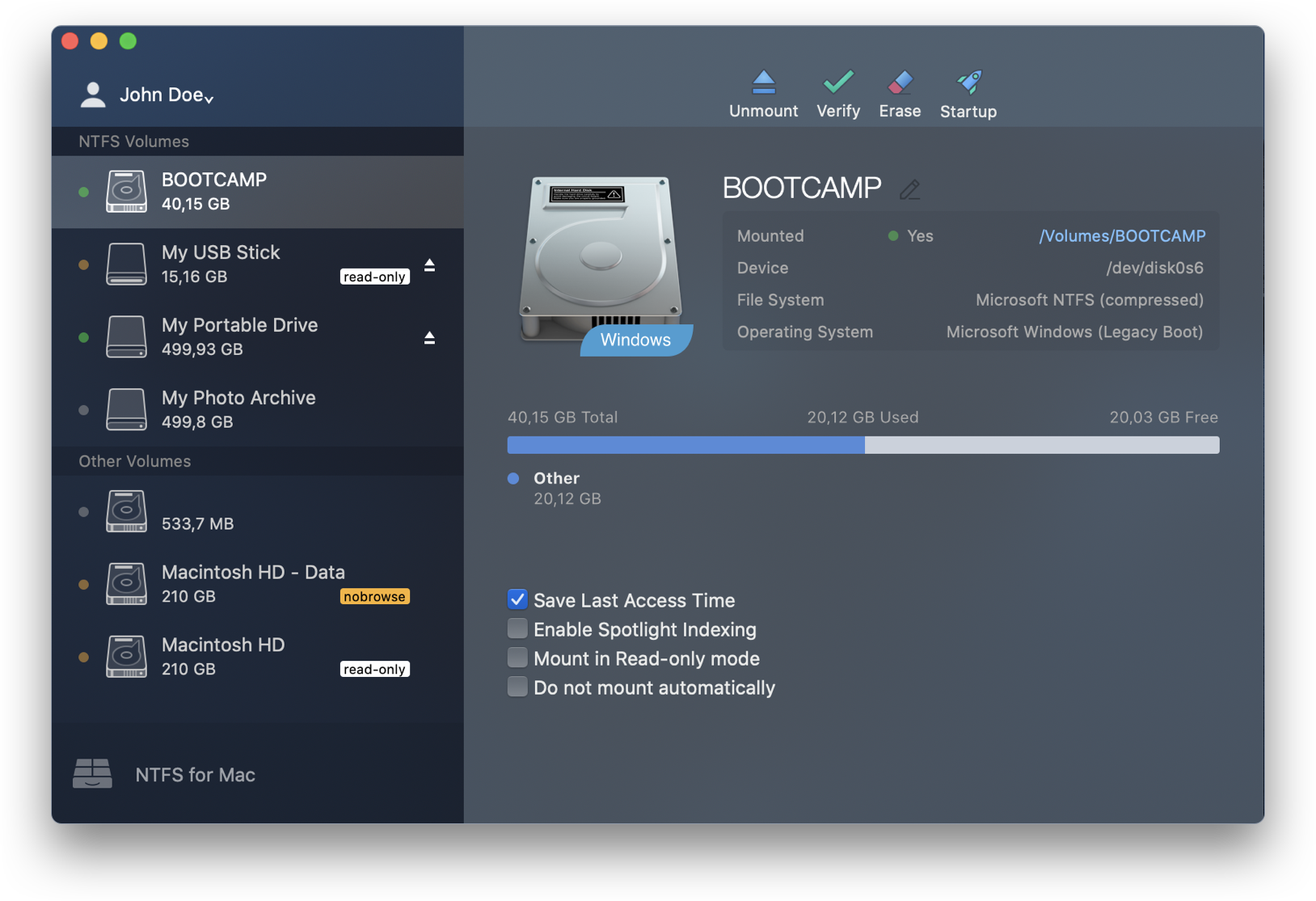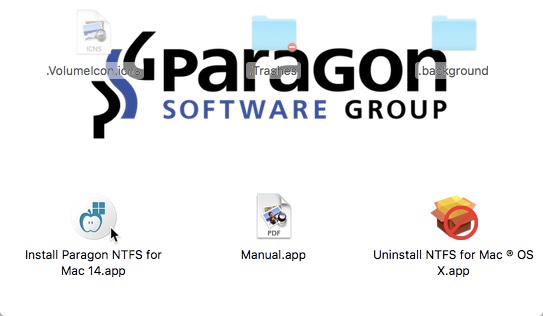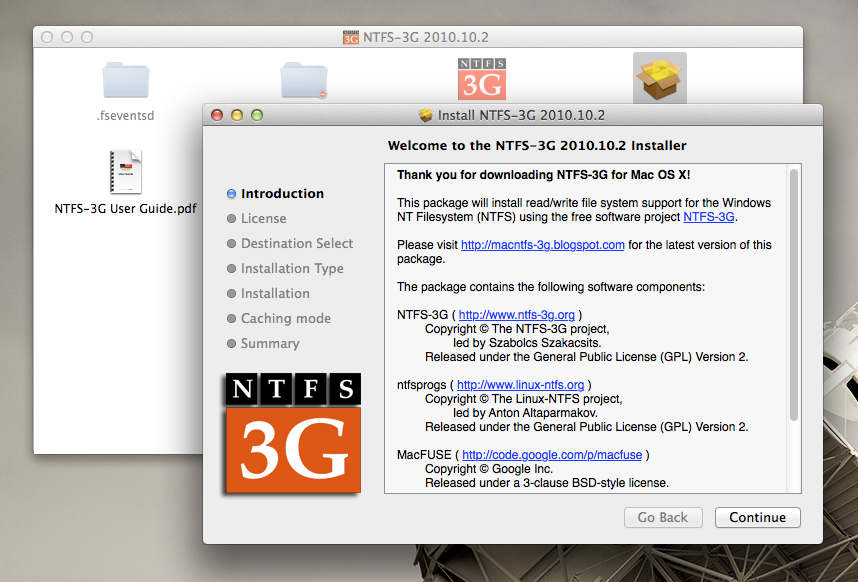
- #INSTALL NTFS DRIVER FOR MAC FOR MAC#
- #INSTALL NTFS DRIVER FOR MAC MAC OS#
- #INSTALL NTFS DRIVER FOR MAC INSTALL#
- #INSTALL NTFS DRIVER FOR MAC SOFTWARE#
- #INSTALL NTFS DRIVER FOR MAC FREE#
If you've got any questions about working with NTFS drives on your Mac, let us know in the comments. This method can't really be recommended, but it is possible.

The problem is that installing NTFS-3G is a major security risk by the project's own admission, as the mount tool runs with root permissions, leaving your system exposed to possible attack.
#INSTALL NTFS DRIVER FOR MAC INSTALL#
You'll also need to install NTFS-3G, which allows you to manually mount and write to NTFS drives. Fuse for macOS, for instance, requires that you use the Terminal.
#INSTALL NTFS DRIVER FOR MAC FREE#
While Paragon and Tuxera provide paid tools that integrate themselves with your Mac and do all of the necessary setup during the installation process, there are free tools that you can install, but they take some work. Tuxera NTFS is available from Tuxera for $31 after a 15-day free trial.
#INSTALL NTFS DRIVER FOR MAC SOFTWARE#
Tuxera also includes support for NTFS extended attributes and works with virtualization software like Parallels and VMware Fusion. It also features failsafe technology designed to protect against unexpected power loss or an unexpected unplugging of your drive, both of which could cause data loss or even damage the drive. Tuxera NTFS uses smart caching technology to speed up transfers, maintaining a sustained speed as files are moved between your external drive and your Mac.

The partition(s) should show on the computer desktop and is now ready to use.Like Microsoft NTFS, Tuxera's app lets you edit, copy, and delete files on NTFS drive on your Mac. When the process is complete the partition(s) will show under the drive.
After making any changes necessary, click on the Partition Button in the lower right corner of the window. #INSTALL NTFS DRIVER FOR MAC MAC OS#
Check the box to “Install Mac OS 9 Disk Driver” if you need to use the drive on a computer booted from OS 9. This is the name that will show up under the drive icon on your desktop. (Various versions of OS X will give different selections: Apple Scheme, Apple Partition Map, etc.) NOTE: If the only format showing is “MS-DOS”, click on the Option Button on the bottom of the window and choose the selection referring to Apple. To change the Volume Format, click on the chosen format and select another. NOTE: Mac OS Extended Journaled will be the best format to choose for the external drive. Highlight each partition to change the Name, Format and Size. If you do not want multiple partitions, select “1 Partition”. #INSTALL NTFS DRIVER FOR MAC FOR MAC#
After restart and login, Paragon NTFS for Mac driver will be used to mount NTFS volumes by default. It’s necessary to restart your Mac before using the driver.
Under “Volume Scheme” click on Current and change to the number of partitions you wish to create. When the installation will finish, the picture will appear, showing the location of the driver settings icon. (You will not get a Partition Tab if the mountable portion of the drive is selected. Highlight the LaCie drive in the list to the left and click on the Partition Tab. Using the Partition utility will verify that all previous formatting information is deleted before initializing. While Apple provides an “Erase” feature, we recommend using Partition to initialize the drive, even if you are not setting up partitions. NOTE: While various versions of the Disk Utility will be slightly different, they all operate similar to these instructions. If you wish to re-initialize or partition the drive in OS X, you will use Apple’s Disk Utility. NOTE: Initializing or partitioning the drive will erase all data on the drive. Highlight the partition of the LaCie drive and look at the information at the bottom of the window. The mountable partition(s) of each drive will show beneath it. All connected hard drives will be listed to the left. 
Launch the Disk Utility by double-clicking on it. The Disk Utility is located in the Utilities Folder in your Applications Folder. To determine what format the drive is in launch Apple’s Disk Utility. You will need to initialize the drive before use.
If the drive is formatted NTFS, it will mount on the latest Mac OS, but it will be read-only. If you plan on only using it on a Mac you will want initialize it. You will want to keep the drive in the Fat32 format ONLY if you are moving it between a Mac and a PC.  If the drive is formatted FAT32 it will mount on most Macintosh systems. If the drive is formatted Mac Extended, you will not need to initialize the drive before use unless you wish to partition it. If the LaCie Setup Assistant is not provided on the drive, depending on the model, your hard drive is formatted Mac Extended (HFS+), Windows FAT32 or Windows NTFS. The LaCie Setup Assistant will automatically prepare your LaCie hard drive for use on your system. Some LaCie drives now ship with the LaCie Setup Assistant installed.
If the drive is formatted FAT32 it will mount on most Macintosh systems. If the drive is formatted Mac Extended, you will not need to initialize the drive before use unless you wish to partition it. If the LaCie Setup Assistant is not provided on the drive, depending on the model, your hard drive is formatted Mac Extended (HFS+), Windows FAT32 or Windows NTFS. The LaCie Setup Assistant will automatically prepare your LaCie hard drive for use on your system. Some LaCie drives now ship with the LaCie Setup Assistant installed.








 0 kommentar(er)
0 kommentar(er)
